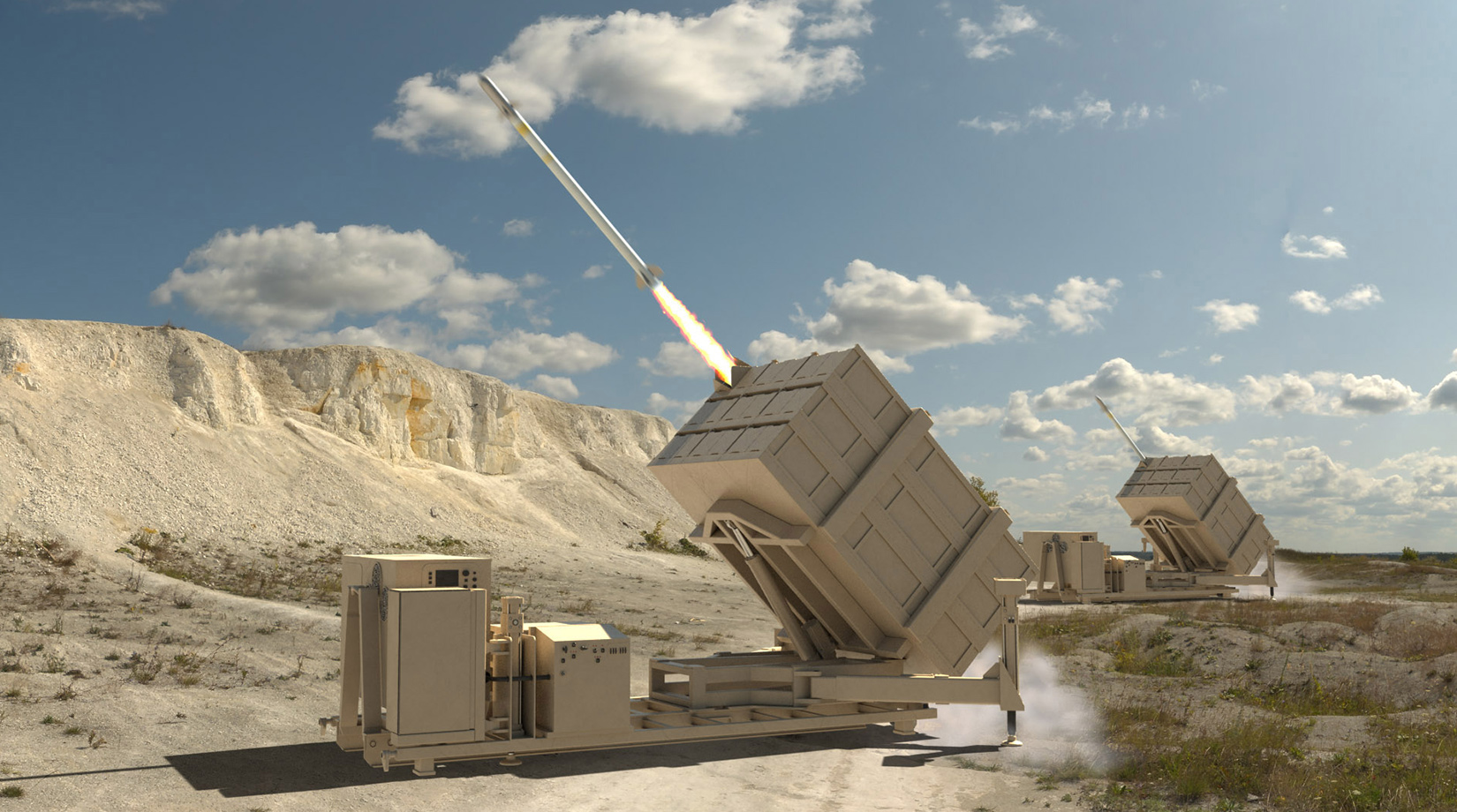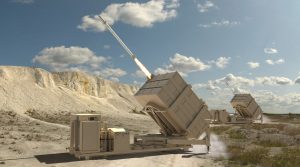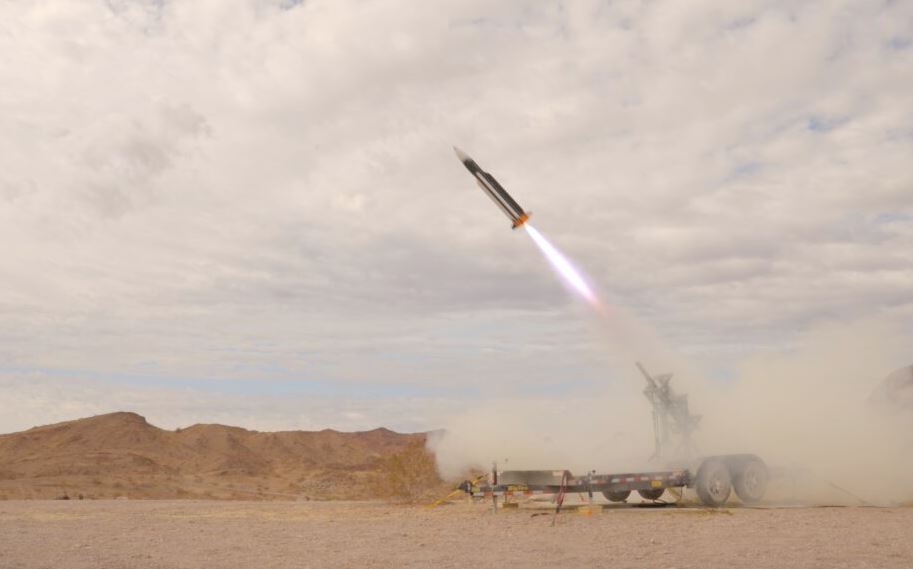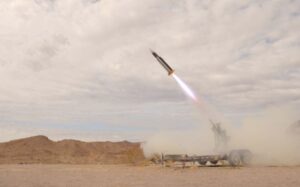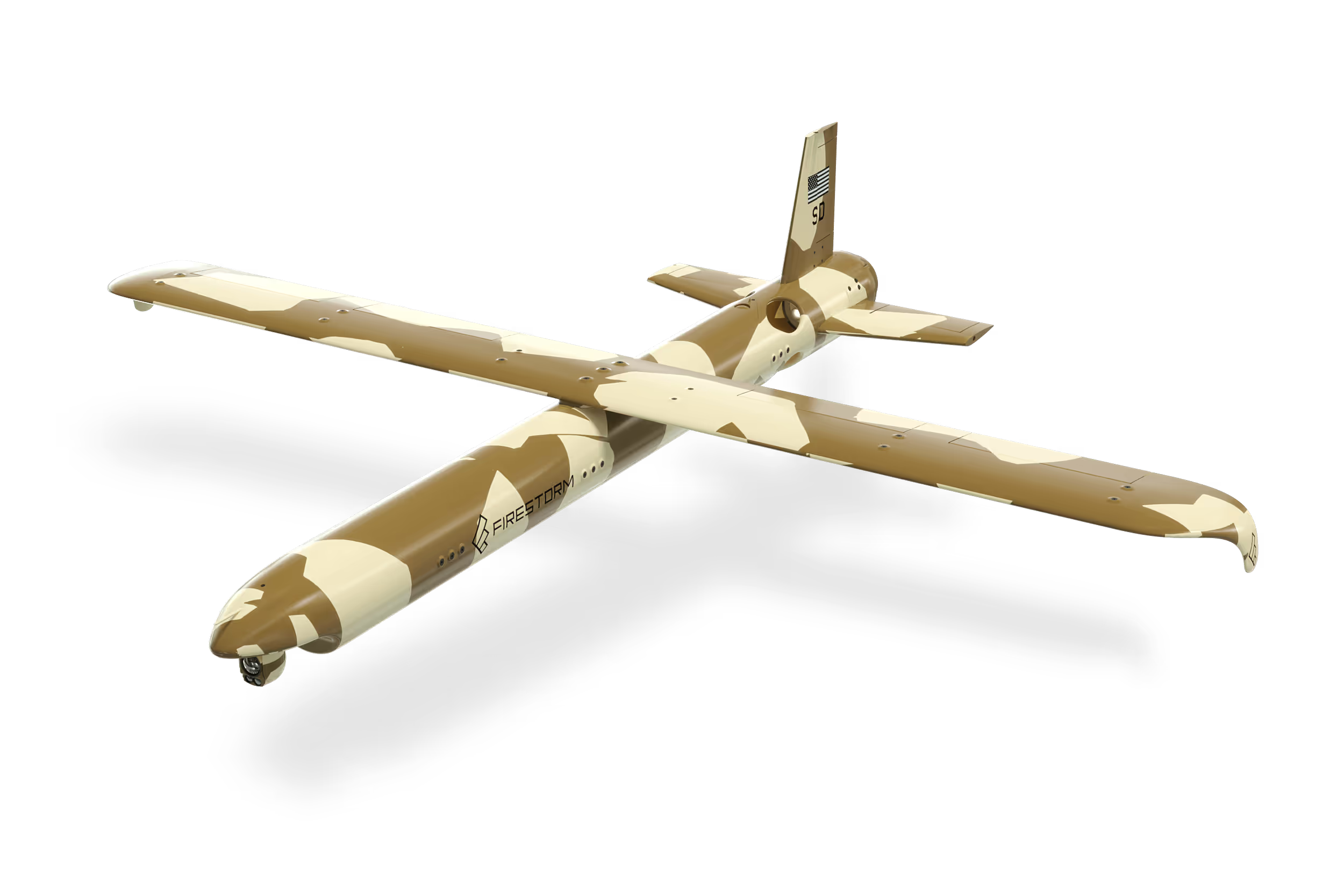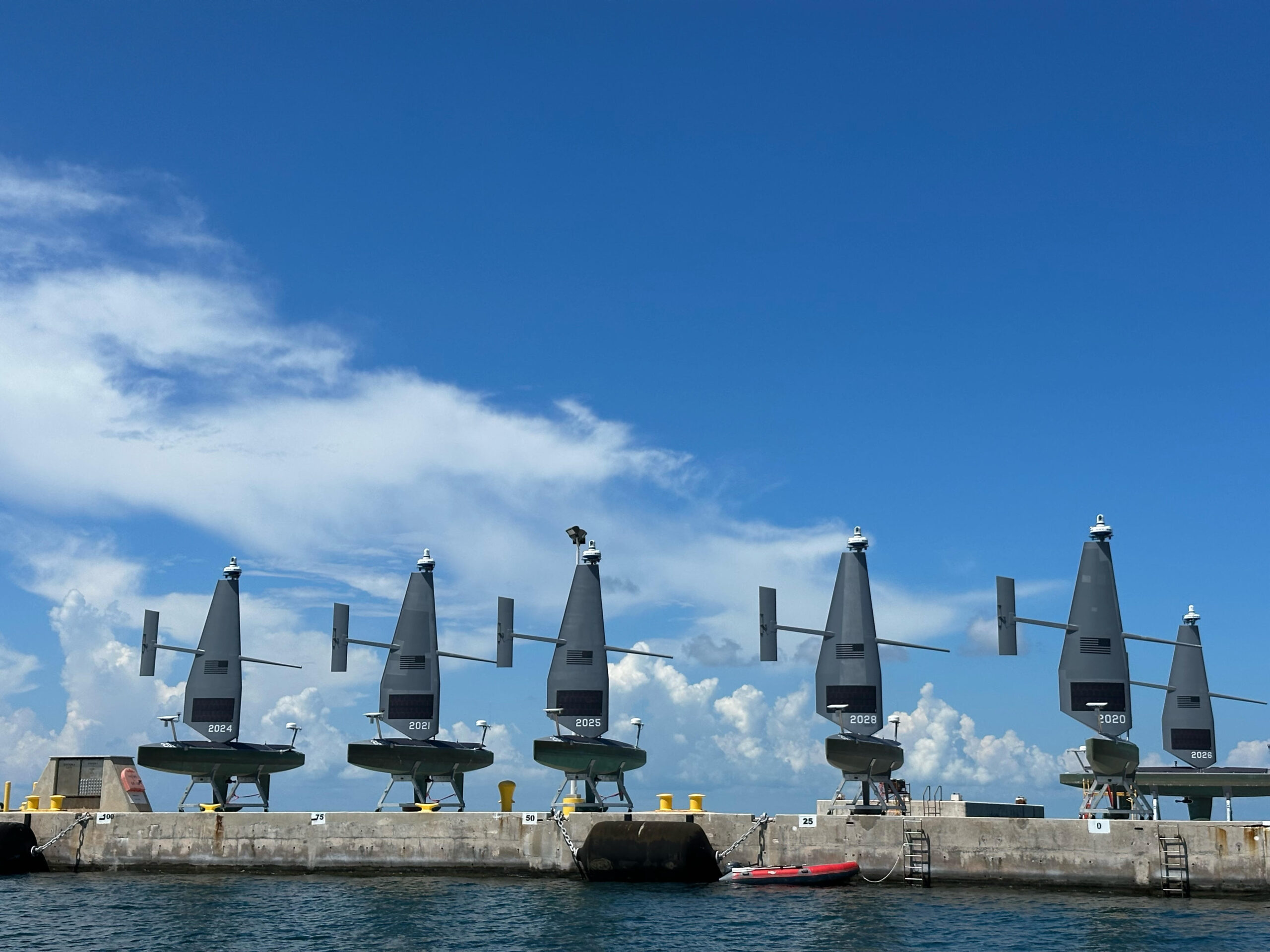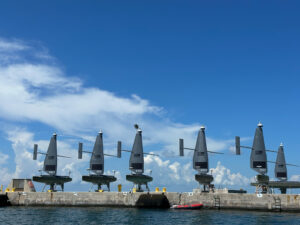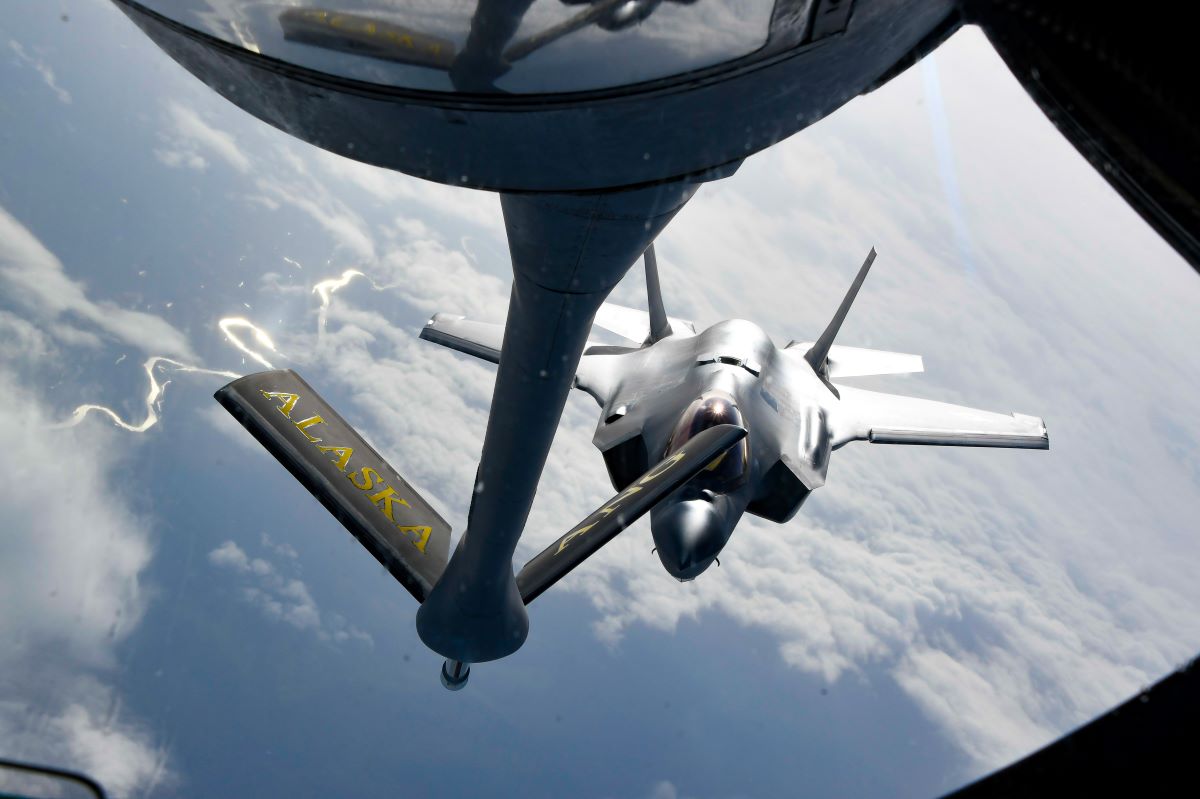First-Person View. Conflicts in the Middle East and Ukraine should spur the Pentagon to put a higher priority on offensive first person view (FPV) drones, according to one lawmaker. “We think of offensive drones as Reapers and Predators dropping Hellfires, and then we’re defending against small drones, but we are not, as far as I can tell, adopting small UAS organic to our maneuver elements,” Sen. Tim Sheehy (R-Mont.) says. “Just like every infantry squad has an automatic weapon, every infantry squad should have an organic sUAS offensive capability—a backpack full of FPVs that they can fly at and into the enemy maneuver units and disrupt them just like we’re seeing all over the world on battlefields from Iranian proxy groups to the Russia-Ukraine war. From my old buddies still in uniform, I do not hear that we have an organic, offensive small UAS capability within our maneuver units, and I think that’s gonna be a great disservice to our young men and women when the next conflict arises.”
…6,000 FPVs. The Latvia-based International Drone Coalition is funding a buy of 6,000 Archer FPVs by California-based Neros Technologies, the company said. The International Drone Coalition’s “down-select process started with 260 companies and included multiple rounds of rigorous testing, which ultimately led to the selection of Archer,” according to Nero Technologies. Archer became the first FPV to receive Pentagon “authority to operate” last month through the drone’s certification under the Defense Innovation Unit’s Blue UAS list, started in 2020 to accelerate the adoption of commercial UAS by DoD. The U.S. Army has an FPV-focused Personal Battlefield Awareness System (P-BAS) program–also called the Company Level sUAS–in the works.
Portugal Fighters. Portugal’s parliament ended Prime Minister Luis Montenegro’s center-right administration with a vote of no confidence on March 10, and new elections may come in May. Outgoing Portugal Defense Minister Nuno Melo told the Portuguese newspaper, Publico, on Thursday that the country is unlikely to buy the Lockheed Martin F-35 despite the Portuguese Air Force recommending the fighter as the prime candidate to replace the country’s F-16s. “We cannot ignore the geopolitical environment in our choices,” Melo said. “The recent position of the United States, in the context of NATO…must make us think about the best options, because the predictability of our allies is a greater asset to take into account.” Melo said that Portugal is concerned that the U.S. “could bring limitations to use, maintenance, components, and everything that has to do with ensuring that aircraft will be operational and used in all types of scenarios.” Instead of up to 28 F-35s, Portugal may now opt for the Rafale or Eurofighter.
Reaper Pod. The Navy MQ-9 Reaper unmanned aerial vehicle test squadron at Patuxent River, Md., received its first SkyTower II (STII) pod in February, ahead of initial operational capability set for later this year, the Navy said this month. Marine Unmanned Aerial Vehicle Squadron (VMU) 3 is currently flying MQ-9s in theater today and are set to be the first to deploy with this new system in 2026. A Navy official said they worked with GALT, a small business prime vendor, to quickly develop the capability via middle-tier acquisition. The STII is an airborne network extension pod to improve cross-domain communications, required to perform the Intelligence, Surveillance, and Reconnaissance (ISR) concept of operations.
Oiler Engines. Fairbanks Morse Defense won another contract from General Dynamics NASSCO to build the main propulsion diesel engines for a Military Sealift Command John Lewis-class fleet replenishment oiler, the future USNS Dolores Huerta (T-AO 214), the company said March 11. T-AO 214 will be the 10th new oiler in the class and will be powered by two 12V 48/60 CR main propulsion engines and two 71 32/44 CR service diesel engines built at the company’s Beloit, Wis., facility. Fairbanks Morse already previously supplied the engines for T-AOs 205 to 2011 and is producing engines for T-AO 212 and 213.
Kratos. Kratos said it won a contract on March 11 worth up to $50 million as a partner to Corvid Technologies LLC for the Short/Medium Range Sub-Orbital Vehicle (SSOV) II contract. Naval Surface Warfare Center, Port Hueneme, White Sands Detachment awarded the contract to cover the design, manufacture, and delivery of short- and medium-range suborbital vehicles. This also includes the provision of ground test hardware, special test equipment, materials, engineering, and launch support services. Work for the subcontract will occur for both the U.S. and international customers, like AUKUS partners Australia and the U.K. in support of missile defense target missions and defense launch services. Kratos is set to provide its Oriole Rocket Motor, Thrust Vector Control and other hardware and systems to help perform complex mission trajectories. The subcontract component could exceed $50 million if all options are exercised. Senior Vice President at Kratos Defense & Rocket Support Services Josh Peterson said the suborbital configurations under the contract “significantly enhance the nation’s ability to rapidly and affordably demonstrate emerging technologies.”
T-REX Assessments. The Department of Defense’s Research and Engineering Office this month is conducting its first Technology Readiness Experimentation (T-REX) event of the year at Camp Atterbury, Ind., with a focus on passive multi-spectral air surveillance kill chain sensor and fusion integration, and low-cost short range air defense counter-drone activities. Companies participating in the counter-unmanned aircraft system limited objective experimentation get to demonstrate their technologies in an operationally relevant environment. T-REX is running March 10 through 18. T-REX is part of R&E’s Rapid Defense Experimentation Reserve to put promising prototypes into experimentation campaigns to provide lessons and observations that could help them become fielded quickly.
Sat-to-UAS Comms. General Atomics Aeronautical Systems last week said its Gray Eagle Extended Range unmanned aircraft system (UAS) in January began flight tests using a proliferated low Earth orbit satellite constellation for aircraft communications under an Army contract. The company said this is the first Army aircraft to be controlled over the satellite service. So far, two flight tests and a series of grounds tests have occurred, with more flights expected. The testing has focused on flight-critical operations, including core aircraft control function as well as sensor and communications systems, the company said.
Containerized Energetics. Maritime systems solutions provider Fairlead and Firehawk Aerospace, which is developing solid rocket motors and new manufacturing techniques for propellants, have formally teamed to adapt Fairlead’s containerized mission modules to house Firehawk’s energetics systems. The modules currently support command and control, power distribution, and electronic warfare applications. The companies last week said their partnership supports the Defense Department’s shift to distributed, forward deployed capabilities. “Combined, they will provide scalable options for shipboard, shore-based, and autonomous operations, supporting missions from force and power projection to long-range strike, deterrence, and expeditionary warfare across multiple domains, including contested environments,” they said of their combined solutions.
AI-Powered SDA. Voyager Technologies last week said it is enhancing its signal processing systems for artificial intelligence-powered space domain awareness (SDA) by leveraging Palantir Technologies’ software, marking an expanded partnership between the companies. “We’re developing an integrated solution, harnessing the power of AI with Palantir’s software stack and taking advantage of real-time radio frequency streams and imagery to perform space-based object detection, identification, classification and tracking,” Matt Magana, president of defense and national security at Voyager, said in a statement.
CISA Nominee. President Trump last week nominated Sean Plankey to be the director of the Cybersecurity and Infrastructure Security Agency (CISA) at the Department of Homeland Security. During the first Trump administration, Plankey spent a year on the National Security Council as director for cyber policy before moving to the Energy Department for a year as principal deputy assistant secretary for cybersecurity, energy security, and emergency response. A former Coast Guard operations officer, Plankey also managed the service’s telecom and satellite communications, served in Afghanistan providing cyber support, was the weapons and tactics branch chief at U.S. Cyber Command, and has worked in industry. He is currently head of cybersecurity software at Indigo Vault.
More AMPVs. The Army on March 13 awarded BAE Systems a $356.7 million order for more Armored Multi-Purpose Vehicles, covering the third phase of the current full-rate production contract. Work on the latest deal is expected to be completed by the end of May 2028. BAE Systems’ AMPV is the Army’s replacement for its legacy M113 armored personnel carriers, with the company receiving a full-rate production contract for the platform in September 2023 that could be worth up to $1.6 billion.
Australia FMS. The State Department on March 10 said it has approved a potential $91.2 million foreign military sale (FMS) with Australia for 54 Guided Multiple Launch Rocket System-Alternate Warhead rounds. Along with the Lockheed Martin-produced munitions, the deal also includes engineering services, technical assistance and logistics and program support. “The proposed sale will enhance Australia’s capability to meet current and future threats by increasing its capability to deter adversaries. The proposed sale will support its goal of improving national and territorial defense, interoperability with U.S. forces, and working to uplift industry as a new source of supply,” the Defense Security Cooperation Agency said in a statement. Australia in October rolled out plans to spend up to $14 billion over the next decade to boost domestic production of munitions, which will include building a new facility by 2029 capable of producing thousands of Lockheed Martin’s GMLRS rockets annually.
Japan FMS. The State Department on March 10 also approved a potential $200 million FMS case with Japan for equipment and services to support its Hyper Velocity Gliding Projectiles program. Under the deal, the U.S. would provide capability to support testing and transportation efforts as well as coordination meetings in the U.S. and Japan. “The proposed sale will improve Japan’s capability to meet current and future threats by providing defense for remote islands,” the DSCA said in a statement.
ONA Closed. Defense Secretary Pete Hegseth has directed the closure of the Pentagon’s Office of Net Assessment, often referred to as DoD’s internal think tank. Hegseth has ordered the development of a plan to rebuild it “in alignment with the department’s strategic priorities,” Chief Pentagon Spokesman Sean Parnell said in a statement. “This decision ensures that our resources are focused on the most pressing national security challenges while maintaining accountability and efficiency,” Parnell said. “The Department remains committed to conducting rigorous, forward-looking strategic assessments that directly inform defense planning and decision-making.” The office’s personnel will be reassigned to new roles, according to the announcement.
GDIT/AWS. General Dynamics Information Technology (GDIT) announced on March 14 it’s expanding its technology partnership with Amazon Web Services through a new strategic collaborative agreement to develop “cutting-edge cybersecurity, artificial intelligence, cloud migration and modernization solutions to accelerate digital transformation” for defense, intelligence and civilian agencies. “Government agencies will benefit from AWS’s cloud computing environment, widely considered to be one of the most secure available today, to support their unique missions. GDIT will leverage its research and development labs to collaborate with AWS on emerging technologies such as quantum, edge computing and high-performance computing,” GDIT said in a statement. GDIT and AWS said they will work with customers to identify “new use cases and rapidly develop proofs of concept and solutions for a wide variety of missions,” including improving cyber security, intelligence and healthcare outcomes, reducing fraud, waste and abuse and advancing high-performance computing research.
Feinberg Confirmed. The Senate on March 14 voted 59-40 to confirm Stephen Feinberg as the new deputy secretary of defense. Feinberg is the co-founder of Cerberus Capital Management, which has invested in a portfolio of defense contractors. He also served as chair of the President’s Intelligence Advisory Board and Intelligence Oversight Board during Trump’s first term. During his confirmation hearing, Feinberg said DoD should consider simplifying program requirements to spur more companies to work with the department, including large, non-defense U.S. manufacturers. Feinberg received the support of all Senate Republicans and six Democrats, to include Sens. John Fetterman (D-Pa.) and Mark Warner (D-Va.) and Senate Armed Services Committee members Jack Reed (D-R.I.), Jeanne Shaheen (D-N.H.), Elissa Slotkin (D-Mich.) and Tim Kaine (D-Va.).
McAleese Conference. The 16th annual McAleese defense programs conference kicks off tomorrow in Arlington, Va. Speakers include Chief of Staff of the Air Force Gen. David Allvin, Strategic Command’s Air Force Gen. Anthony Cotton, Missile Defense Agency Director Air Force Lt. Gen. Heath Collins, Rep. Rob Wittman (R-Va.), and other top military leaders. This year’s event includes a “defense disruptors” panel with leading CEOs.

